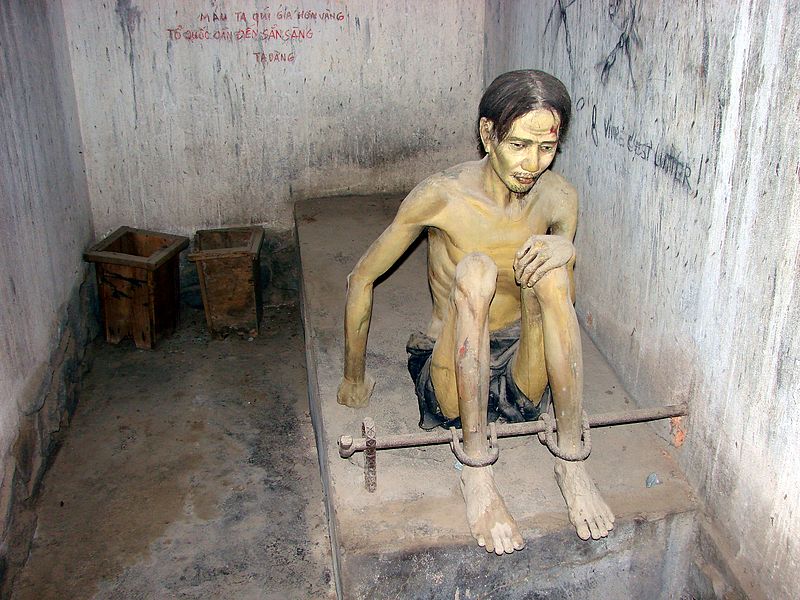A comprehensive compilation of must - visit places in Ho chi minh.
1. Củ Chi tunnels
The tunnels of Củ Chi are an immense network of connecting underground tunnels located in the Củ Chi district of Ho Chi Minh City(Saigon), Vietnam, and are part of a much larger network of tunnels that underlie much of the country. The Củ Chi tunnels were the location of several military campaigns during the Vietnam War, and were the Viet Cong's base of operations for the Tết Offensive in 1968.
It is the ultimate destination you don't want to miss in Saigon!
It is the ultimate destination you don't want to miss in Saigon!


2. The War Remnants Museum
It is a war museum at 28 Vo Van Tan, in District 3, Ho Chi Minh City (Saigon), Vietnam. It primarily contains exhibits relating to the Vietnam War, but also includes many exhibits relating to the first Indochina War involving the French colonialists.
It is a war museum at 28 Vo Van Tan, in District 3, Ho Chi Minh City (Saigon), Vietnam. It primarily contains exhibits relating to the Vietnam War, but also includes many exhibits relating to the first Indochina War involving the French colonialists.


3. Saigon Notre-Dame Basilica
It is a cathedral located in the downtown of Ho Chi Minh City, Vietnam. Established by French colonists, the cathedral was constructed between 1863 and 1880. It has two bell towers, reaching a height of 58 meters (190 feet).
It is a cathedral located in the downtown of Ho Chi Minh City, Vietnam. Established by French colonists, the cathedral was constructed between 1863 and 1880. It has two bell towers, reaching a height of 58 meters (190 feet).

.jpg)
4. The Municipal Theatre of Ho Chi Minh City known as Saigon Opera House (Vietnamese: Nhà hát lớn Thành phố Hồ Chí Minh; French: Opėra de Saigon), is an opera house in Ho Chi Minh City, Vietnam. It is an example of French Colonial architecture in Vietnam. Built in 1897 by French architect Eugène Ferret as the Opėra de Saigon, the 800 seat building was used as the home of the Lower House assembly of South Vietnam after 1956. It was not until 1975 that it was again used as a theatre, and restored in 1995.

5. Independence Palace (Dinh Độc Lập) also known as Reunification Palace (Vietnamese: Dinh Thống Nhất), built on the site of the former Norodom Palace, is a landmark in Ho Chi Minh City, Vietnam. It was designed by architect Ngô Viết Thụand was the home and workplace of the President of South Vietnam during the Vietnam War. It was the site of the end of the Vietnam War during the Fall of Saigon on April 30, 1975, when a North Vietnamese Army tank crashed through its gates.President of South Vietnam during the Vietnam War. It was the site of the end of the Vietnam War during the Fall of Saigon on April 30, 1975, when a North Vietnamese Army tank crashed through its gates.

6. Phạm Ngũ Lão street located in District 1 of Ho Chi Minh City, formerly Saigon, Vietnam. It was named after Phạm Ngũ Lão, the national hero. The intersection of Phạm Ngũ Lão and Đề Thám streets are referred to as the backpacker district of Saigon. This area is frequented by Ho Chi Minh city locals and tourist who flock to the area markets (both open air and indoors) to buy cheap clothes (some of which are counterfeit), DVDs, souvenirs, and war memorabilia. The many bars and cafes in this district are conveniently located near Saigon's city centre. In the Vietnamese language, this area is called "khu Tay ba lo" (Backpacker's area). The Phạm Ngũ Lão area is known for its affordable guest houses and mini-hotels as well as the availability of tourist agencies which primarily cater to budget tourists, similar to Khao San Road in Bangkok, Thailand.

7. Saigon Central Post Office (Vietnamese: Bưu điện Trung tâm Sài Gòn, French: Poste centrale de Saïgon) is a post office in the downtown Ho Chi Minh City, near Saigon Notre-Dame Basilica, the city's cathedral. The building was constructed when Vietnam was part of French Indochina in the late 19th century. It counts with Gothic, Renaissance and French influences. It was constructed between 1886-1891 and is now a tourist attraction. It was designed by Auguste Henri Vildieu and Alfred Foulhoux, as well as Gustave Eiffel. Inside the Saigon Central Post office of special note are two painted maps that were created just after the post office was built, the first one located on the left side of the building is a map of Southern Vietnam and Cambodia titled Lignes telegraphiques du Sud Vietnam et Cambodge 1892 which translates to "Telegraphic lines of Southern Vietnam and Cambodia 1892". The second map of greater Saigon is titled Saigon et ses environs 1892 translating to "Sai Gon and its environment 1892".
























































